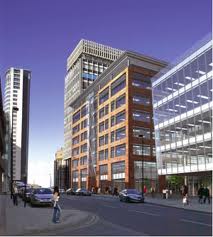
(TheNicheReport.com) 3/8/2012 -- Homeownership has always been an important aspect of the American Dream. That idealistic ethos, which was shattered by the bursting of the housing bubble in the first decade of the 21st century, is now centered on a sensible economic recovery rather than owning a piece of the United States. Rather than looking for single-family residences, more Americans are opting for rental deals, and thus the mortgage market for multifamily properties like apartment buildings is heating up.
The rate of American homeownership has fallen to levels not seen since another financial bubble became manifest on Wall Street. In November of 1998, the dot-com bubble was in full swing with the Initial Public Offering (IPO) of theGlobe.com, an online social network that failed to attain the stature of Facebook. That IPO made history by allowing lucky investors to realize the most one-day gains ever, and it only took one year for it to collapse. Interest rates at that time were considerably low at that time, and thus homeownership began to edge up in 1998. Mortgage interest rates are even lower today, and yet rates of homeownership are just as low as they were then.
A Multifamily Recovery
The excesses of the housing bubble were not limited to McMansions and single-family residences. Entire apartment complexes have also defaulted on their commercial mortgages. Some of these multifamily properties were once part of the infamous condo-conversion craze of the early 21st century. Once individual unit owners began to default on their mortgages, there was not enough time for the building owners to revert back to rental units. Some of these failed projects have already foreclosed and are now part of Fannie Mae and Freddie Mac's real estate-owned (REO) portfolio.
Fannie and Freddie see the great potential that these REO properties hold for the American economic recovery and they are acting accordingly by making it easy for qualified investors to acquire these buildings. The demand for rental properties far outpaces the meager market for single-family and luxury real estate. In December of 2011, the volume of multifamily mortgages guaranteed by Fannie and Freddie was the highest since the year 2000. Commercial real estate investors spent almost $4 billion in multifamily purchases in January, significantly more than investments made in other commercial properties such as shopping malls and office buildings.
Attractive Interest Rates
Loans made on commercial real estate purchases are enjoying record low interest rates, just like their residential counterparts. A 10-year fixed mortgage on a multifamily building can be currently obtained with an interest rate of just 4.1 percent. Both Fannie Mae and Freddie Mac are willing to work with investors to ensure that financing is provided to the advantage of investors who are willing to become good landlords to thousands of Americans looking for fair rentals.
Interest rates on multifamily mortgages could even see lower numbers this year while rental revenue is due to increase by almost seven percent. Private lenders that foreclosed upon apartment complexes and became unwilling landlords in the last few years are beginning to see the light, as many report having recouped at least 80 percent of the mortgage loss.



